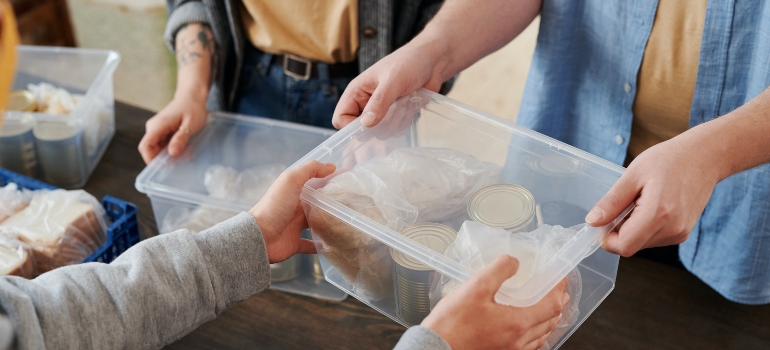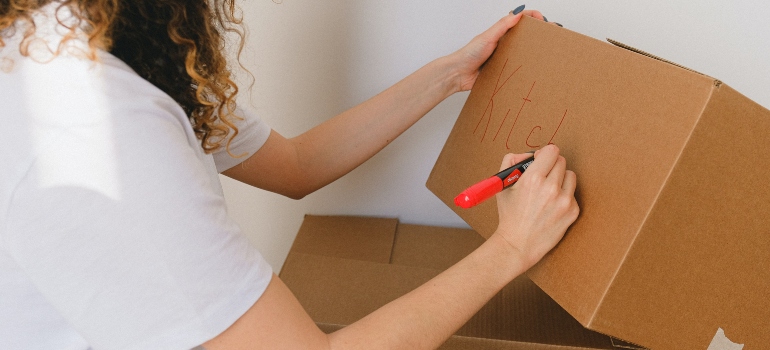How to Prepare Your Items for Long-Term Storage
get a quote
Imagine moving to a smaller apartment or traveling abroad for an extended period. You find yourself in a situation where storage units North Seattle offers become a necessity. Whether it’s sentimental belongings, valuable items, or important documents, the need for proper preparation cannot be overstated. In this guide, we will discuss the essential steps and considerations on how to prepare your items for long-term storage. Feel free to follow these guidelines and ensure the safety, condition, and preservation of your stored possessions.
Assessing Items for Long-Term Storage
Take a moment to evaluate the necessity of each possession and consider its worth in the long run. Start off by taking into account factors like:
- Sentimental value;
- Practicality;
- Potential deterioration.
Is it an item that holds deep emotional significance? Will it serve a practical purpose in the future? Can it withstand the test of time without significant damage? Consider these factors in order to make the best choices about which items are truly worth storing long-term, as that way, you can also avoid cluttering your storage unit.
Decluttering and Downsizing
Decluttering is essential when preparing items for long-term storage. By decluttering, you reduce the volume of items being stored and make the process more manageable and cost-effective. To begin, evaluate each item and ask yourself practical questions: Do I really need this? Will I use it in the future?

Next, categorize belongings into keep, donate, sell, or discard piles. Keep only the items that hold sentimental or practical value. Donate or sell items that are no longer useful to you but might benefit others, and discard anything that is damaged or beyond repair. Decluttering streamlines the storage process and ensures your rented storage pods Seattle offers are optimally used.
Cleaning and Preparing Items
Cleaning your items is one of the key steps to follow in order to prepare your items for long-term storage. Clean each item and ensure they are thoroughly dry to avoid mold, mildew, and pest infestations. Follow specific cleaning instructions based on the type of item—furniture, clothing, and so on. For furniture, disassemble it and take extra care to protect each piece to prevent damage. One of the best ways to protect delicate items is by wrapping each piece in bubble wrap or using protective covers before placing them inside a storage pod.
Proper Packaging and Protection
Begin by selecting suitable storage containers, boxes, and packing materials. For delicate items, wrap them carefully with protective materials like bubble wrap or packing paper to prevent breakage. Ensure that boxes are sealed properly to ward off dust, moisture, and pests. Use high-quality packing tape to secure the boxes, and consider labeling them for easy identification.
If storing furniture or larger items, use furniture covers or blankets to shield them from scratches and dust. For additional convenience, make sure to use portable Woodinville self storage units. They get delivered to your address and left there until the lease is done!

Labeling and Inventory Management
One of the key aspects of preparing your items for long-term storage is having a labeling system. Begin by labeling each box or container with a detailed inventory list, specifying the contents inside. Also, maintain a master inventory list that provides an overview of all items stored. This helps you easily locate specific items when needed. To ensure efficiency, utilize clear labeling systems such as color-coding or numbering. It makes it quick and easy to identify items without having to open every box.
Security Measures
The first thing you should do is find Bainbridge Island self storage units that prioritize security. Look for facilities with good reviews and features like surveillance cameras, access controls, and on-site security personnel. Additionally, consider implementing additional security measures, such as using sturdy locks on storage units or containers. This adds an extra layer of protection. You can also use portable storage containers that are driven directly to your home. They can stay there for as long as you need to pack. Once they are taken to a secure storage facility, you’ll enjoy a newfound peace of mind.
Organization and Placement in Storage Unit
It all starts with getting to know the layout of the unit. Evaluate the measures of the unit and the number of boxes you have to create a sense of how you’ll organize them. Consider grouping similar items together and creating designated zones for different categories. To optimize accessibility, store frequently accessed items near the entrance for convenience. When stacking items, place heavier ones at the bottom to prevent instability. Utilize shelves, hooks, or storage bins to maximize vertical space and keep items organized. Label boxes or use clear storage containers to identify contents easily.

Regular Maintenance and Monitoring
As you’re storing items long-term, you may periodically visit your portable storage unit for inspection. Check for signs of pests, moisture, or damage. If any issues are detected, take prompt action to address them. Also, make sure that the unit is properly ventilated and that temperature levels are within acceptable ranges. It’s one of the key steps in keeping your items safe and maintained in long-term storage.
Prepare Your Items for Long-Term Storage by Following These Steps!
To best prepare your items for long-term storage, there are a few key steps to follow. It is essential to assess their necessity and worth, declutter and downsize, and clean and prepare them properly. Also, wrap, pack, and protect them adequately, employ a labeling and inventory management system, prioritize security measures, organize and place items strategically in your on demand storage Seattle relies on, and conduct regular maintenance and monitoring. Whether you’re downsizing, moving, or going on an extended trip, taking these steps will help you make the most of your on-demand, door-to-door, portable storage experience!
